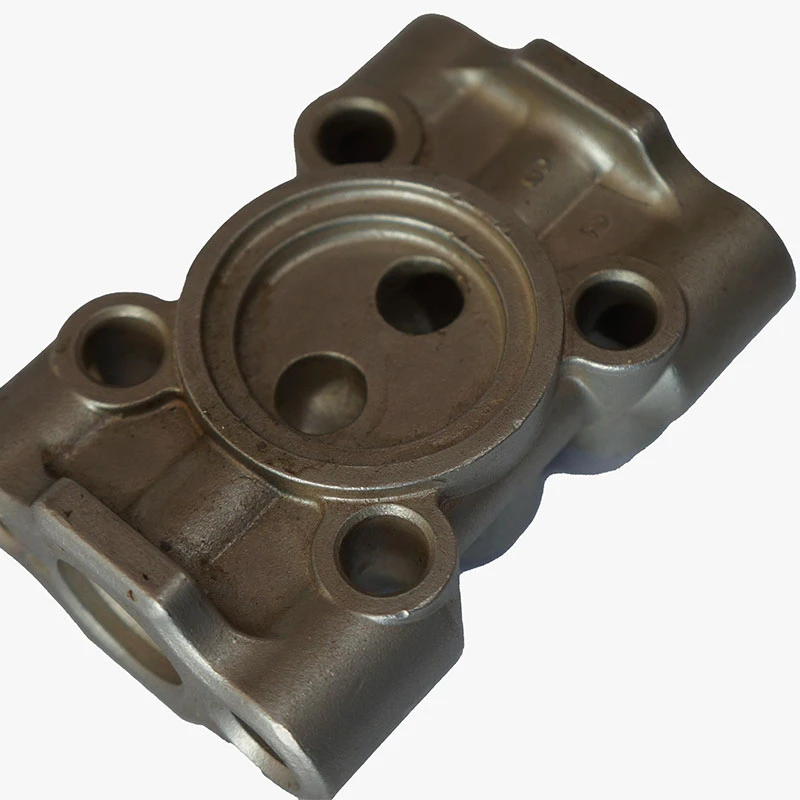what is stamping process in sheet metal
Understanding the Stamping Process in Sheet Metal Fabrication
Stamping is a vital manufacturing process used in sheet metal fabrication, widely applied in various industries for producing components with high precision and consistency. This process involves the use of specialized machinery and tools to shape, cut, and form metal sheets into desired shapes and sizes. In this article, we will explore the stamping process, its types, applications, advantages, and considerations to keep in mind.
The Stamping Process Explained
The stamping process typically begins with a flat sheet of metal, which can be made from materials such as steel, aluminum, or brass. The sheets are fed into a stamping press, where a die, which consists of two parts (the punch and the die block), performs the shaping or cutting operation. When the press operates, the punch descends into the die block, either cutting through the sheet or forming it in various ways, depending on the design requirements.
There are several types of stamping processes, each serving different purposes
1. Blanking This process involves cutting out a flat piece of material from a larger sheet. The blank piece is then used for further processing.
2. Punching Similar to blanking, punching involves creating holes or shapes in the sheet metal. The removed material is usually scrap.
3. Bending This method involves changing the angle or shape of the metal sheet. The die applies pressure on the sheet, allowing it to bend along a predetermined line.
4. Forming This process shapes the metal sheet into three-dimensional forms, often using more complex dies to achieve the desired geometry.
5. Deep Drawing In deep drawing, a sheet is drawn into a forming die to create a hollow part, often utilized for creating containers or automotive parts.
Applications of Stamping
Stamping is extensively used across diverse sectors, including automotive, aerospace, electronics, and consumer goods. In the automotive industry, for example, stamping is crucial for producing parts like chassis components, brackets, and interior panels. The electronic sector benefits from stamping through the fabrication of connectors, housings, and hardware for devices. Consumer goods also rely on stamping for manufacturing kitchen appliances, tools, and decorative items.
Advantages of Stamping
what is stamping process in sheet metal

Stamping processes offer numerous advantages that make them an attractive choice for manufacturers
1. High Precision and Consistency The use of dies ensures that each produced part is uniform, meeting stringent tolerances.
2. Cost-Effectiveness Once the stamping dies are created, producing parts becomes highly efficient, reducing labor costs and material wastage.
3. Production Speed Stamping can produce large quantities of parts quickly, making it ideal for high-volume production runs.
4. Versatility Stamping can accommodate a variety of materials and thicknesses, making it suitable for diverse applications.
5. Strength and Durability Stamped parts often exhibit enhanced structural integrity, particularly when made from high-strength materials.
Considerations in the Stamping Process
While stamping offers numerous benefits, several factors must be considered to ensure success
- Material Selection Choosing the right type of metal and thickness is crucial to achieving the desired properties and ensuring successful forming.
- Die Design The design of the die significantly impacts the stamping process's success. Proper die design minimizes defects and optimizes material usage.
- Equipment Maintenance Regular maintenance of stamping machines is essential to prevent breakdowns and ensure consistent production quality.
- Safety Measures Stamping involves high-speed machinery, so safety precautions should be in place to protect workers.
In conclusion, the stamping process in sheet metal fabrication is a complex yet highly efficient method for producing high-quality components. With its wide range of applications and numerous advantages, stamping remains a cornerstone of modern manufacturing. Understanding the intricacies of this process can help businesses optimize their production capabilities and enhance their competitive edge in the market.
-
Precision Sheet Metal Stamping Manufacturer | Fast & ReliableNewsAug.01,2025
-
OEM Sand Cast Pump Valve Fittings - Baoding Hairun Machinery And Equipment Trading Co., Ltd.NewsAug.01,2025
-
Custom OEM Impellers | High Efficiency & PrecisionNewsAug.01,2025
-
OEM Sand Cast Pump Valve Fittings - Baoding Hairun Machinery | Customization, Quality AssuranceNewsAug.01,2025
-
OEM Sand Cast Pump Valve Fittings - Baoding Hairun Machinery And Equipment Trading Co., Ltd.NewsAug.01,2025
-
OEM Sand Cast Pump Valve Fittings - Baoding Hairun Machinery And Equipment Trading Co., Ltd.NewsJul.31,2025















